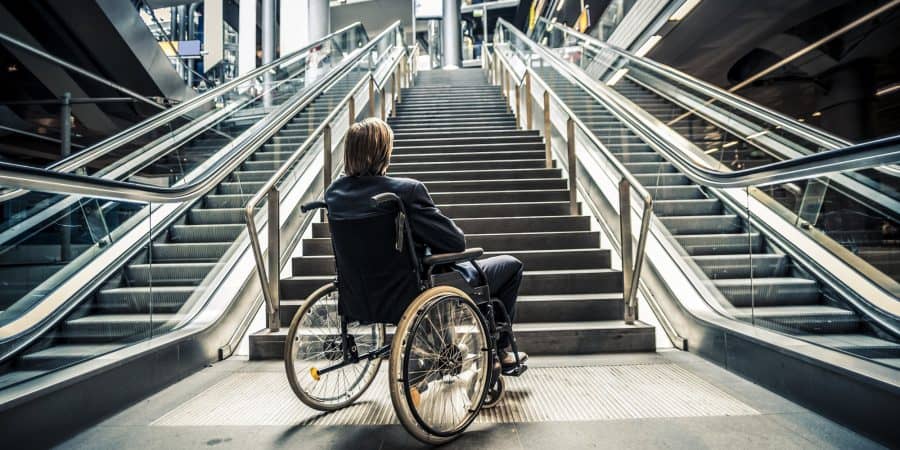Comment: The impossibility of commuting with a disability during and after COVID-19

Whether people are born with a disability, or have sustained a debilitating spinal injury or similar, they should have the same access to public services as everyone else.  Isabel Douglas discusses how to tackle issues of accessibility in a post-pandemic world…
Isabel Douglas discusses how to tackle issues of accessibility in a post-pandemic world…
The Covid-19 pandemic has exposed inequalities at the heart of our society.
There’s the divide between those quarantining in spacious homes with garden access, and families cramped into high-rise apartments with no outdoor space. There’s the expectation for all children to home-school, when some don’t have computer or internet access. And there’s the split between businesses who’ve gone to great lengths to ensure their employees are enabled and empowered to work from home, and those that have focused on ways of keeping workers in the office.
Among people with disabilities, the division in how businesses have embraced working from home has created an even starker contrast between the ‘lucky’ and the ‘unlucky’. For those still expected to travel to work during the pandemic, and who don’t have access to their own vehicle, an already challenging commute has been made that much harder.
Public transport’s accessibility issues
Prior to the Covid-19 outbreak, the stats on disabled access to public transport were already looking bad. In London, which boasts one of the country’s best funded public transport networks, commutes were shown to take an average of 49 per cent longer for wheelchair users than the able-bodied, while 71 per cent of tube stations were inaccessible for people with a disability, according to statistics by Bolt Burdon Kemp.
So, if an individual with a disability’s normal commute is plagued by being unable to access buses and trains – whether through overcrowding or simple inaccessibility of the service – how will Covid restrictions have affected them further?
Overcrowding is still an issue, despite social distancing
During the first lockdown, public transport use fell by about 90 per cent, according to Cabinet Office data. By the third lockdown, the reduction was just 70 per cent. And although those figures might sound promising, consider that the numbers still using the service will have been heavily concentrated on commute times. Images of crowded buses and tube carriages have been a constant – even with social distancing recommendations.
With reduced services running, the wait time to alight a vehicle that not only has space but is safe to travel on, will be even longer. That affects everyone. However, for commuters with disabilities, it exacerbates an already dire situation.
Despite vaccine rollouts and the government’s announced roadmap out of lockdown, it doesn’t look like social distancing is going to be a thing of the past for some time. Some scientists have even speculated that some form of social distancing will need to be in place until 2022. And with demand for public transport services unlikely to rise to pre-pandemic numbers any time soon, according to independent watchdog Transport Focus, it would be fair to speculate that services will continue to run at a reduced rate.
For commuters with disabilities, this spells misery.
Tackling accessibility in a post-pandemic world
Businesses should endeavour to make sure their staff – whether able-bodied or otherwise – are empowered to work without being disadvantaged by their life circumstances. Yet there is also an onus on our society to ensure equal access to options. Commuters with disabilities may want to be in the office, and they shouldn’t have to spend nearly 50 per cent more time travelling than their able-bodied counterparts to do that.
Whether people are born with a disability, or have sustained a debilitating spinal injury or similar, they should have the same access to public services as everyone else. And with the pandemic making the widening divide between their experiences and the experiences of the able-bodied on public transport even starker, it’s time to address the issue. It’s down to us to ensure that commuting with a disability in the post-pandemic world doesn’t continue to be impossible.
Isabel Douglas is a writer and editor who specialises in producing data-driven content cross a range of disciplines and interests.


